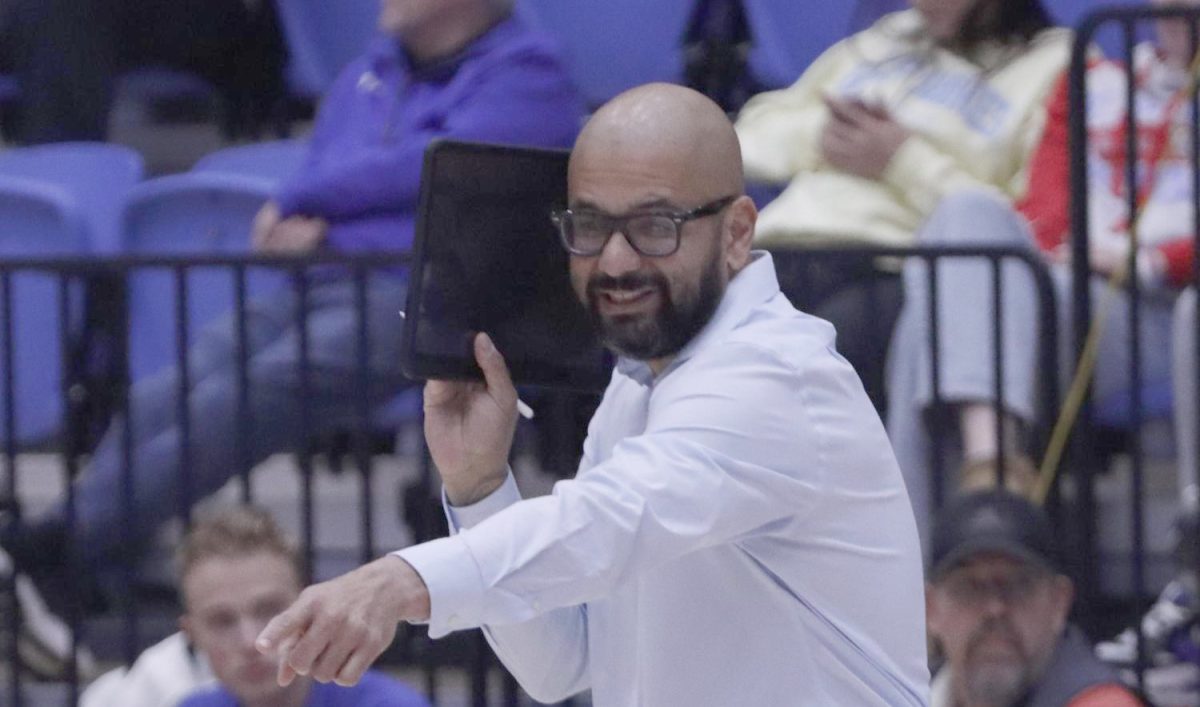Rugby to lobby for support
Corrections are in bold
Monday will be an important day for women’s rugby.
The bi-annual meeting for Emerging Sports will take place in Indianapolis and growing women’s sports will lobby for support from the Committee of Women’s Athletics.
Emerging sports are club or intramural sports that apply to develop into a full NCAA program for women.
Eastern started its rugby program in 1998 and became an NCAA team in 2002 when rugby became an emerging sport.
USA Rugby will present a five-page report documenting what the organization has done during the last two years to advance the sport, said Becky Carlson, Emerging Sports program manager for USA Rugby.
“It’s a basic update saying this is the stuff that we are doing and we are committed to it,” Carlson said. “Our efforts aren’t going to (diminish).”
Carlson said that the report would ask the National Collegiate Athletic Association and CWA for more support in promoting intercollegiate rugby.
Eastern played in the first ever NCAA women’s rugby game and lost to West Chester University 20-19 on Sept. 15, 2007. Bowdoin College in Maine, Southern Vermont College and Norwich University in Vermont are the other NCAA rugby teams.
Norwich University and Southern Vermont College will play the second NCAA game on Sept. 6 at Bennington, Vt. A rematch between Eastern and West Chester on Sept. 27 will be the third NCAA game.
She said the state of rugby in Colorado high schools could help for long-term collegiate rugby.
The Colorado High School Activities Association is polling athletic directors to see if advancing rugby into a varsity sport would be acceptable, Carlson said.
Individual schools cannot make rugby varsity status without state approval. Raising rugby’s status in Colorado high schools could generate a larger fan base for the sport and influence other states to follow suit, Carlson hypothesized.
Having a larger fan base and producing more rugby athletes could increase the demand for intercollegiate rugby. A decision could be made by 2010.
A 1991 survey of NCAA institutions revealed 30 percent of collegiate athletes were women even though women consisted over 50 percent of college students, according to the NCAA Emerging Sports Web site.
The NCAA Gender-Equity Task Force was created during the following year. In 1993, the task force developed the emerging sports program to help schools obtain compliance with Title IX legislation.
Title IX is a federal law that requires public and private institutions to provide equal opportunities for women athletes to participate in college athletics and to obtain scholarships. To become a fully operational program that is not an emerging sport, which has national league championships, the sport needs to gain 40 NCAA teams within a 10-year period.
There are seven emerging sports: archery, badminton, equestrian, rugby, squash, synchronized swimming and team handball.
Carlson said that none of the emerging sports are close to achieving championship status except equestrian, which has 25 teams. She is concerned with this trend.
“In the grand scheme of things, it isn’t that rugby is struggling,” Carlson said. “It’s that emerging sports is struggling a little bit because of a lack of enforcement of the Office of Civil Rights.”
According to Carlson, many schools have a 15-20 percent disparity with having more men than women athletes.
Bob Bajek can be reached at 581-7944 or at rtbajek@eiu.edu.

















![[Thumbnail Edition] Senior Foward Macy McGlone, getsw the ball and gets the point during the first half of the game aginst Western Illinois University,, Eastern Illinois University Lost to Western Illinois University Thursday March 6 20205, 78-75 EIU lost making it the end of their season](https://www.dailyeasternnews.com/wp-content/uploads/2025/03/WBB_OVC_03_O-1-e1743361637111-1200x614.jpg)




















































